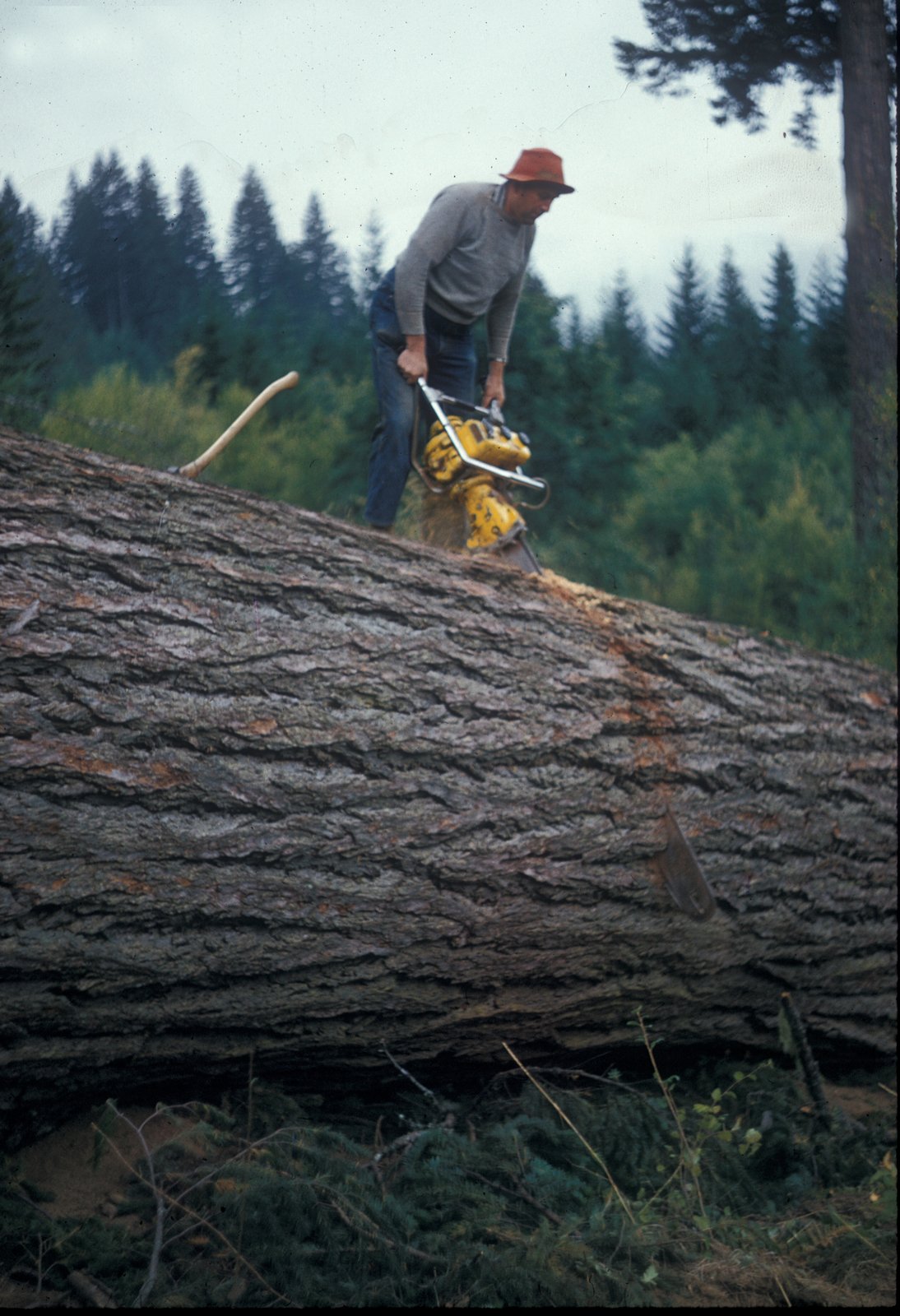Richard Rice Logging History
Richard was raised on the family farm and began his life’s work in the timber industry when he was hired by North Plains (OR) independent logging operator, Chester Bates as a caterpillar driver at the age of 14. He continued to drive “cat” for Bates, on and off as work was available, until World War II. During the war he worked in the Oregon Shipyards in Portland.
Following WWII, he was able to purchase his own Caterpillar D6 track type tractor/bulldozer and worked independently for small timber owners as a “cat skinner.” He soon began buying small lots of timber and, in his own words, became an “independent logging operator.” He then upgraded equipment to a D7 cat. Amongst his peers, he held the reputation as “the best darned cat skinner in the county.” Around 1943, Richard purchased at public auction a section (640 acres) of old growth timber near the town of Timber, Oregon for a price of $4,600. This purchase was the principal source of income for the Rice family, including construction of their “dream house,” acquisition of major mineral specimens for the collection, and retirement income.
In addition, Richard purchased other small lots of timber and logged them. Depending on the price of timber, he would supplement income by other caterpillar operations. He built logging roads and fire access roads for the state; performed salvage operations for Multnomah County after the 1948 Vanport Flood; and cleaned up after the 1964 fire that destroyed the Forestry Building in northwest Portland, the last remaining in-situ building from the 1905 Lewis and Clark Exposition. Richard retired from logging at age 75 and sold the last quarter section of the 640-acre purchase to Hampton Lumber in 1993 at the peak of lumber pricing.

